An·?thro·?po·?cene | \ ?an(t)-thr?-p?-?s?n
the period of time during which human activities have had an environmental impact on the Earth regarded as constituting a distinct geological age.
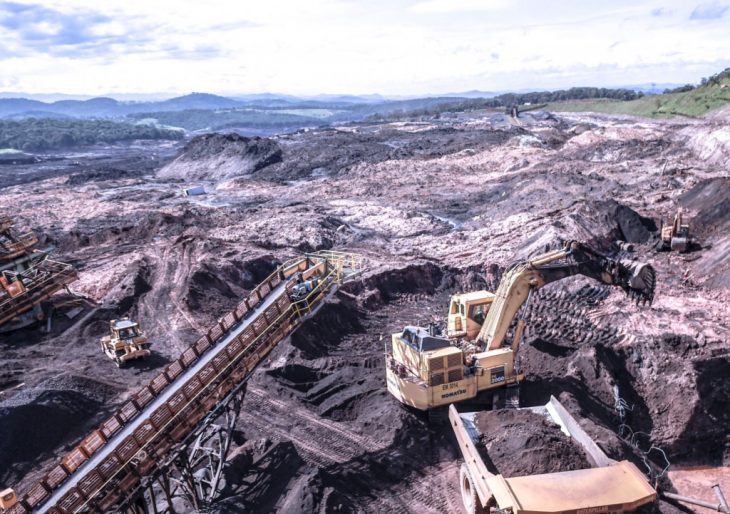
The footprint of human activity on earth includes irreversible damages in the form of soil, water and air pollution. The impact is so deep, a new era has been named: the Anthropocene. Facing such issues, in addition to land scarcity due to overpopulation, The Future of Capao Xavier Mine project foresees a future in which residential areas are able to occupy lands that have been previously exploded for natural resources. It sets a precedent on how to reclaim land that has been polluted for mining activities.
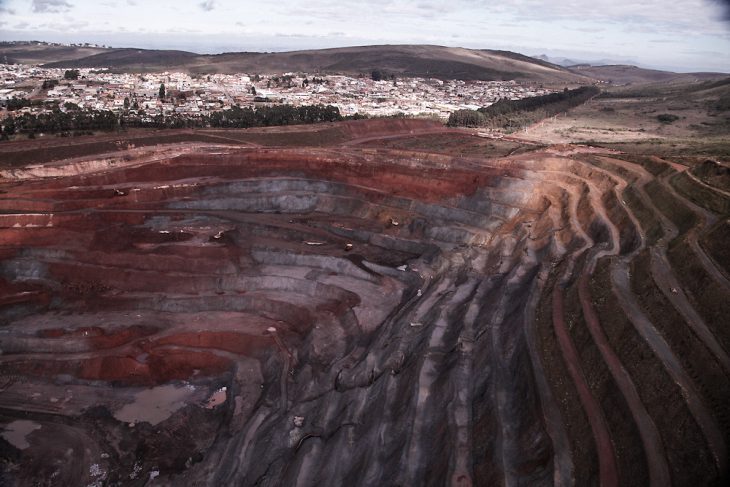
Capao Xavier mine in Nova Lima, near Jardim Canada neighborhood.
Foto: JOAO MARCOS ROSA / NITRO
Capao Xavier Mine was chosen as the site due to its proximity to Brumadinho, where another mine collapsed early in 2019, killing hundreds of people. Both mines are maintained by the same company, Vale. It has been proved that if they are not given the proper maintenance when the mining activity concludes, tragedies occur. Thus, instead of filing the mine with tailings, a toxic byproduct of mining for iron ore, the project proposes a way to reuse the waste material and save the land from further pollution.
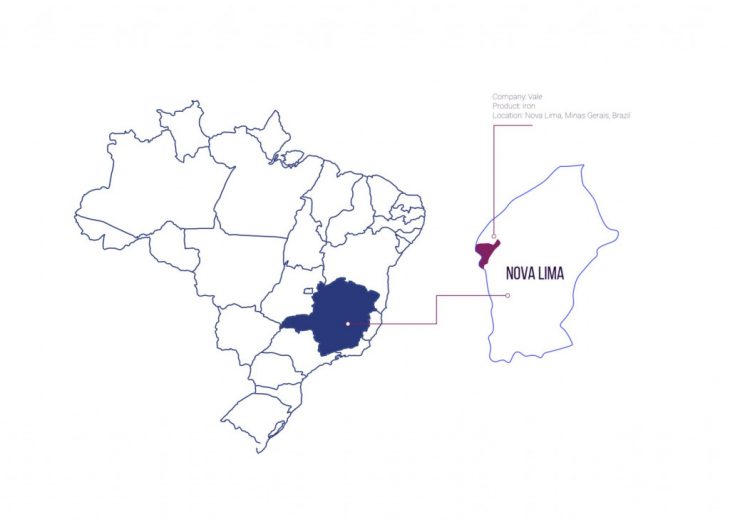
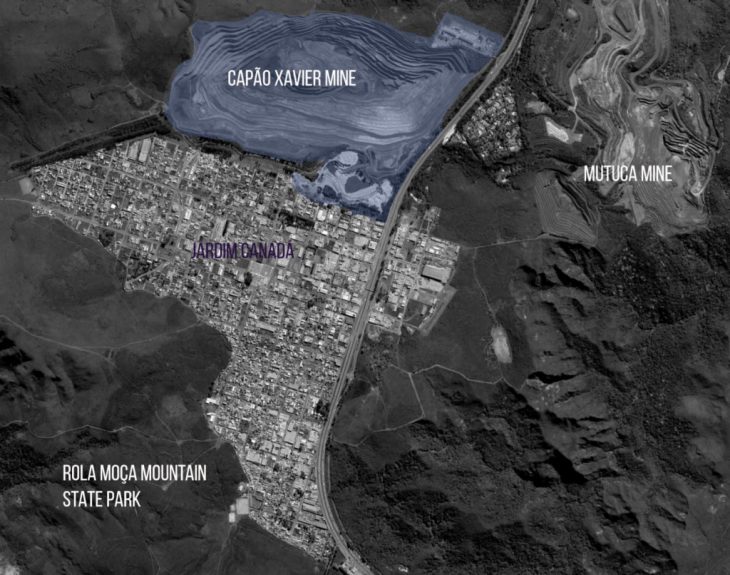
The community development program for the Capao Xavier Mine is divided into three phases that take on a holistic approach to reclaim the land for future mine residential projects. The first phase takes place now; since the mine is still active minimizing noise levels is necessary. This is done by building a vegetation link between the mine and Jardim Canada, the neighboring town, to keep people from moving away due to increased sound pollution. This link merges the roads from the town into the mine; the areas around the access points are used for parks, innovation centers, and housing in the future. The parks will serve as a sound barrier. The buildings’ material is made from the tailings collected at the mine and 3D printed on site. This will be the first prototype of 3D printing in the community. Phase one ends when the mining activity culminates.
Building Materials
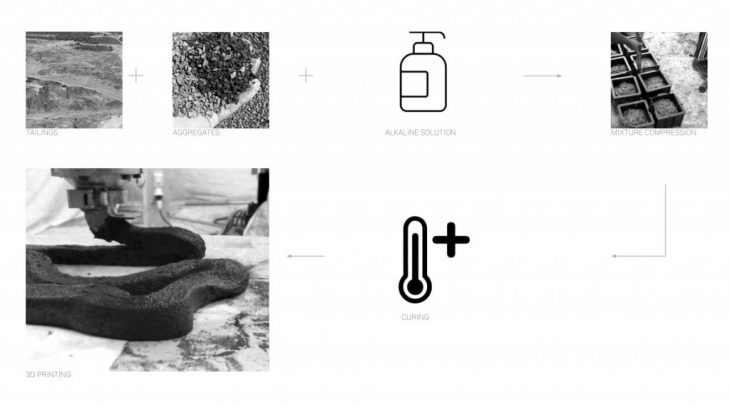
Building materials for Capao Xavier Mine
Program
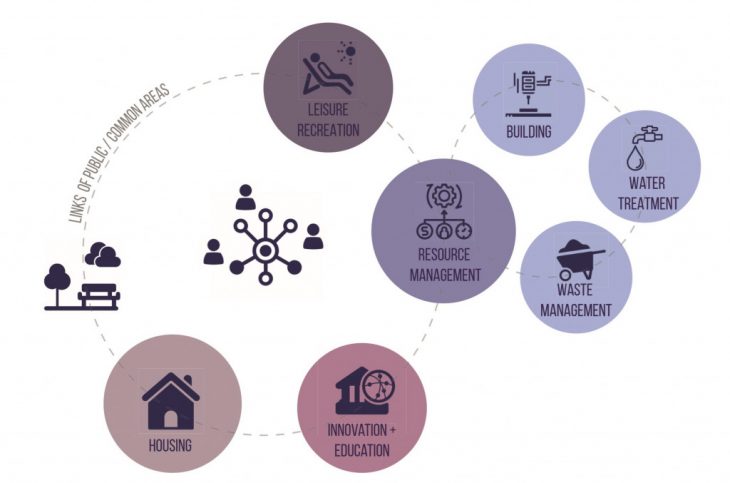
Program of functions based on the community
System Diagram
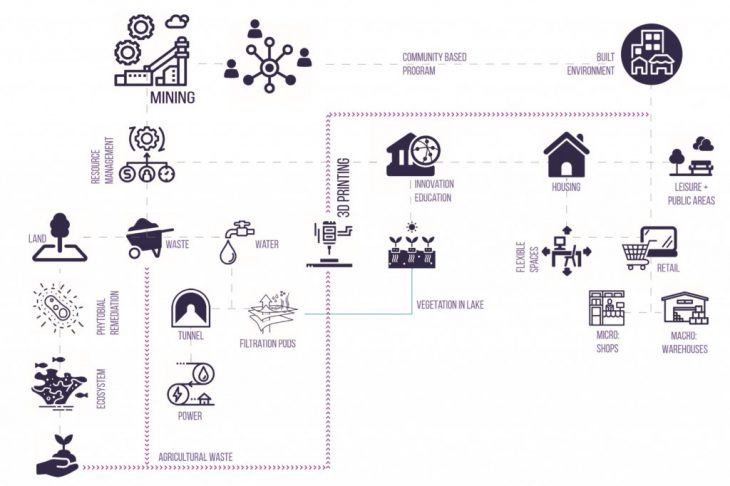
Phase 1: The Link
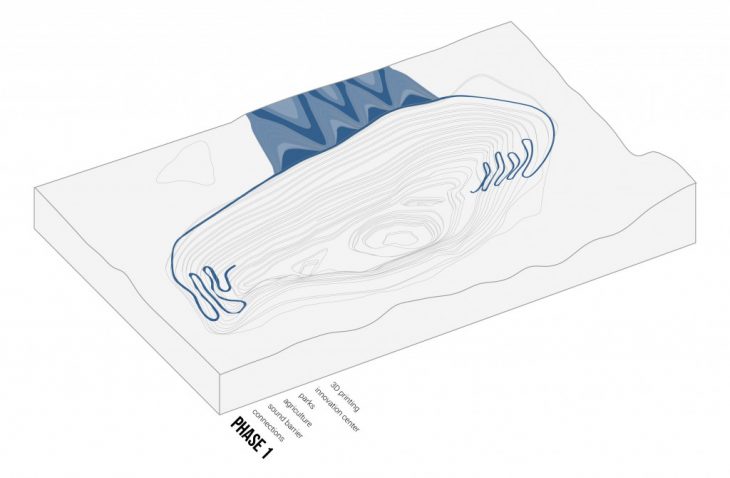
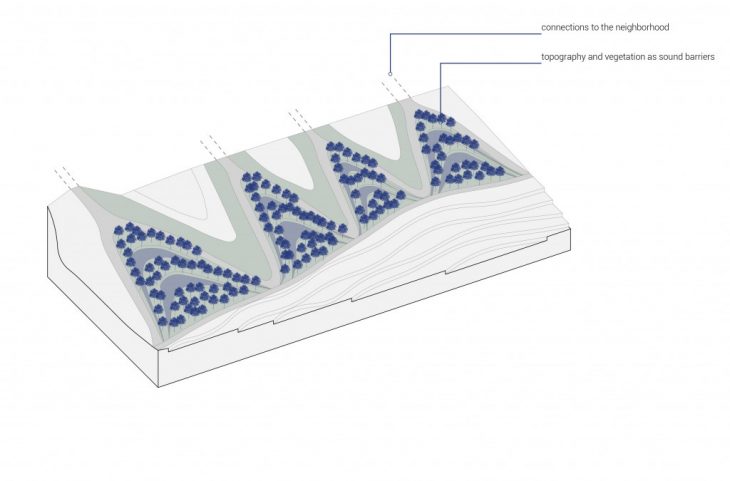
The second phase involves a deeper rehabilitation of the ground and lake, for inactive parts of the mine will start remediation during phase one. Remediation strategies will help bring life back to the soil contaminated with metal particles. The construction of tunnels during this phase will allow the passage of the lake’s water from one mine to the next, creating a sustainable energy source. The building of bridges within the mine will help with the connection of hubs in the different levels of the mine. The second part of the project also includes the remodeling of the mine curves in order to allow the use of terraces for water oxygenation and filtration as a passive system. Water pumps and power stations are placed in the lake to perform as an active water purifying system.
Phase 2: Reclaiming the Land
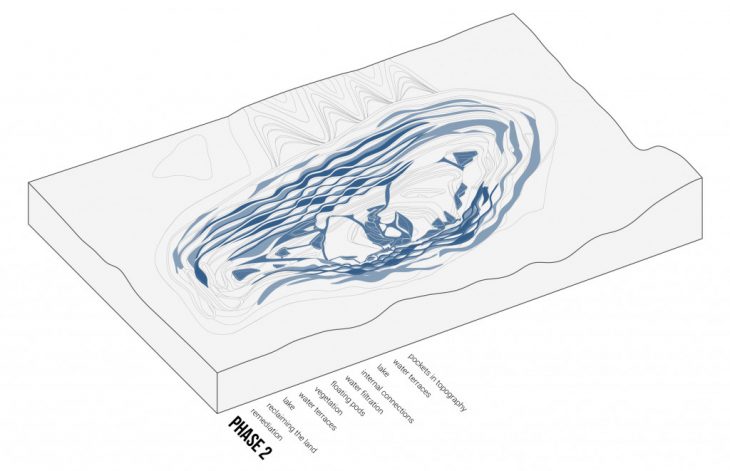 The third phase is made up of the fabrication of housing units and innovation hubs where the people currently working in mining will be educated to transition into a new business model. By setting up a grid network of space divisions and adapting it to the site through a solar study, we are able to obtain the exact position of where the housing units should be placed within the mine. People living in the mine will have access to new building facilities, including: education, retail, leisure, and housing.
The third phase is made up of the fabrication of housing units and innovation hubs where the people currently working in mining will be educated to transition into a new business model. By setting up a grid network of space divisions and adapting it to the site through a solar study, we are able to obtain the exact position of where the housing units should be placed within the mine. People living in the mine will have access to new building facilities, including: education, retail, leisure, and housing.
Program for the mine
- Lake: it provides a sustainable energy source, controlling its levels through a dam.
- Innovation hubs: where education is the key to future living. The community will shift from relying on resources from mining to agriculture and creating new building techniques and/ or materials from their agricultural waste. People will spend more time in co-working spaces or studios rather than their own homes.
- Housing: Units that spread throughout the mine for the people working there. Housing units comply with requirements for comfort and wellbeing.
- Industrial: dam management, waste management, 3D printing.
- Public spaces: gathering areas in front of housing units and within the lake.
- Leisure: Spaces in the lake for activities set by residents. Buildings that follow the topography of the mine for activities that require a closed space, e.g. cinemas.
- Bridges: Connections for housing, hubs, and industrial nodes.
- Agriculture: Once the mining activity stops and tailings can no longer be used for 3d printing, agricultural waste becomes the next material to use.
- Commercial: spread out throughout the mine, in the lake and in between housing units.
Phase 3: Living in a Mine
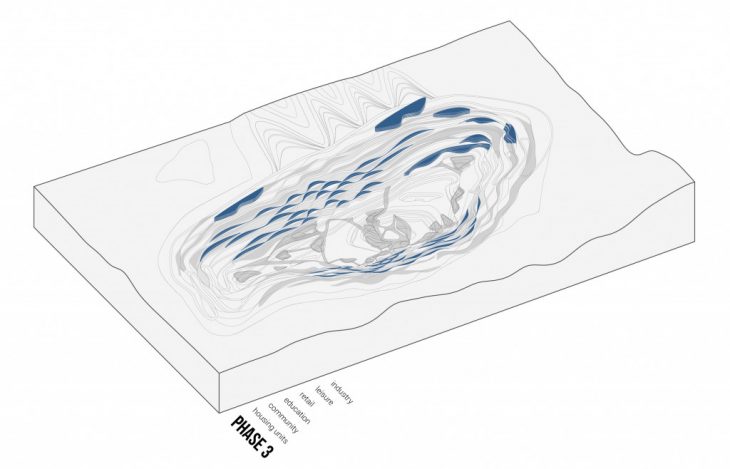
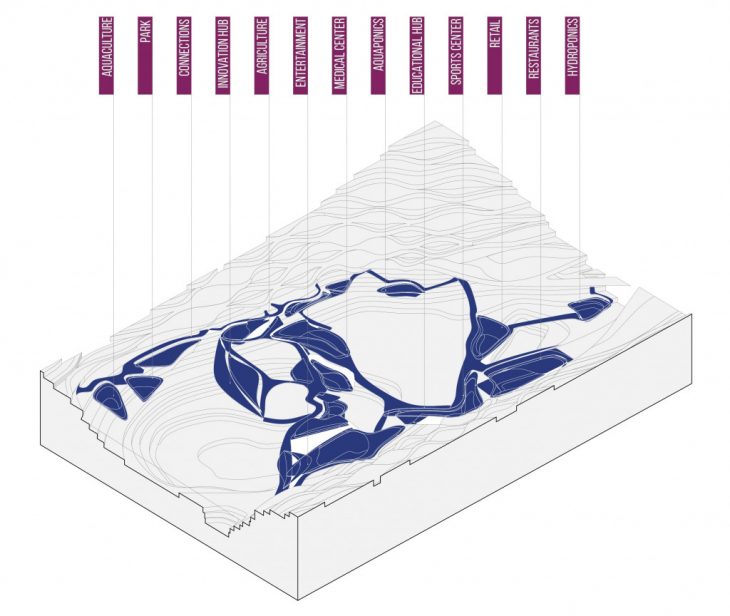
Detail of Master Plan
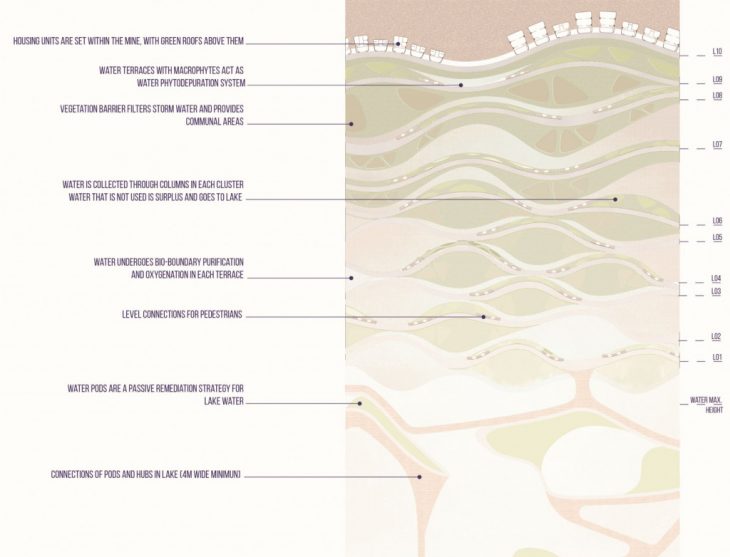
Detailed section of water pods
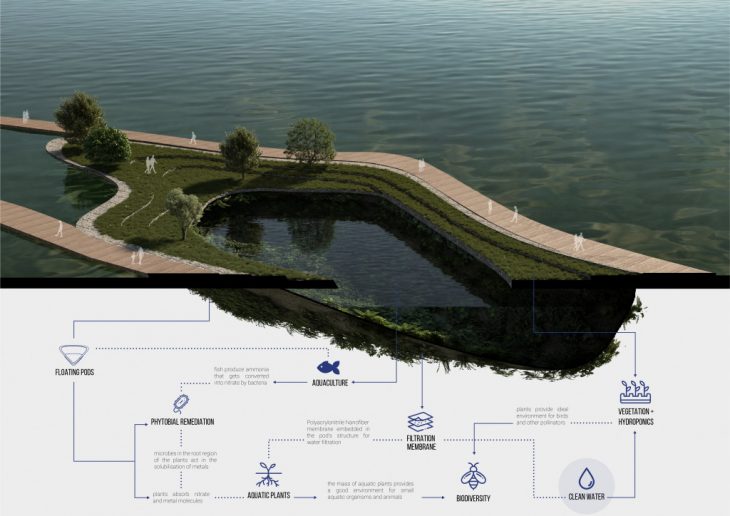
The house unit is divided into quarters to cover the basic needs of a human being:
- Sleeping quarter: closed private area.
- Cooking quarter: open kitchen with a view to the mine.
- Sanitation quarter: closed private area.
- X Quarter: by the kitchen, the space can be adapted for the needs of each user. It also has views towards the mine.
While the main body of the house is excavated, each housing unit’s inner walls are 3D printed in order to serve best the necessities of each user. The floor plan allows for the expansion of the unit within the mine, giving the user freedom to choose the right distribution of quarters. The columns between each unit support the green roof above the houses and collect rainwater to be used by the residents. In the future, space will be a commodity, so all the entertainment and leisure areas are left to communal spaces outside the residences along with green areas.
Axonometric projection of the program
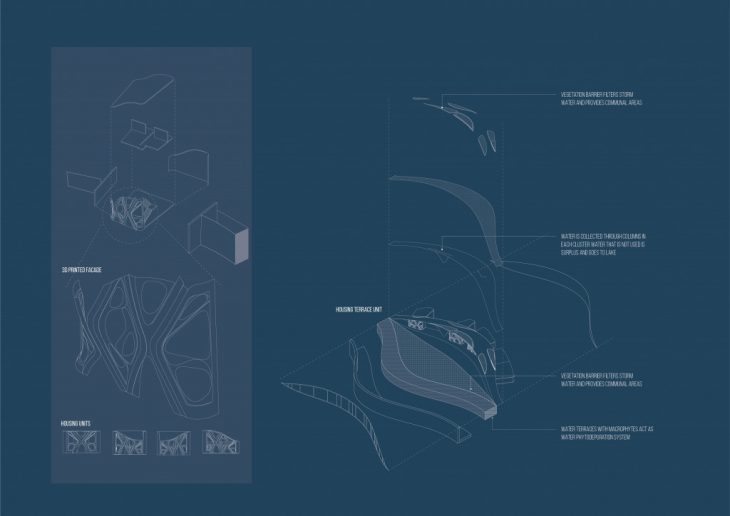
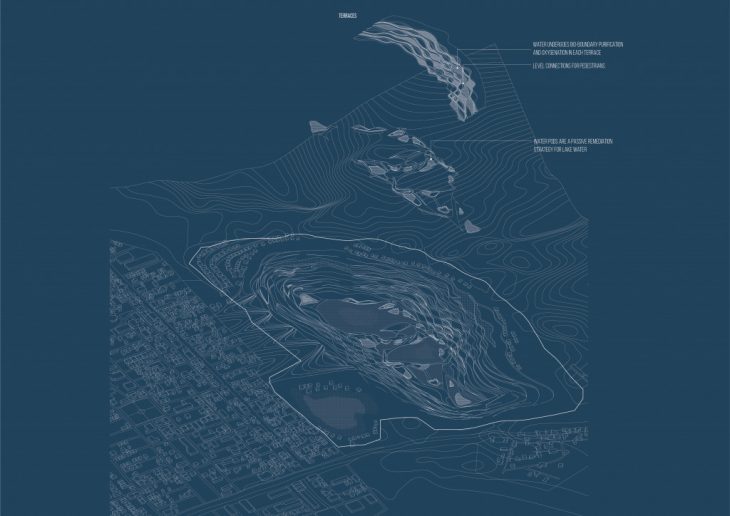
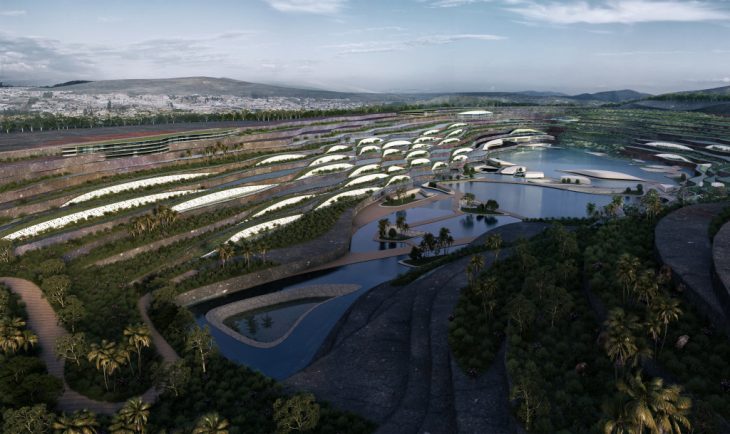
The House of the Future // Capao Xavier Mine is a project of IAAC, Institute for Advanced Architecture of Catalonia developed at Master in Advanced Architecture in 2019/2020 by:
Students: Brenda Alves de Freitas, Léa Garguet-Duport, Chaitanya Kumar Dasari, and Lilett Ricaurte
Faculty: Carmelo Zapulla | Assistant Faculty: Sebastian Amorelli